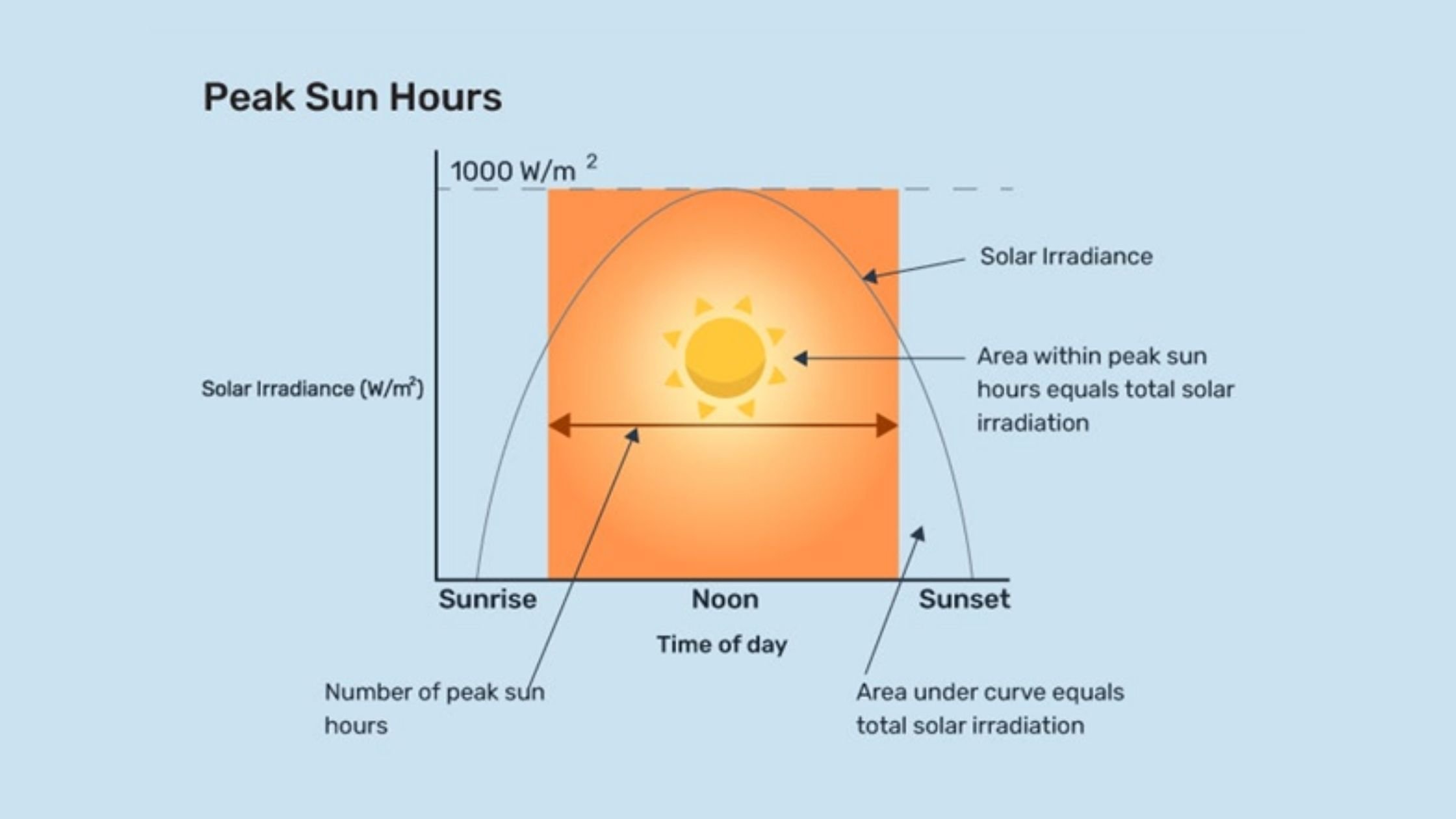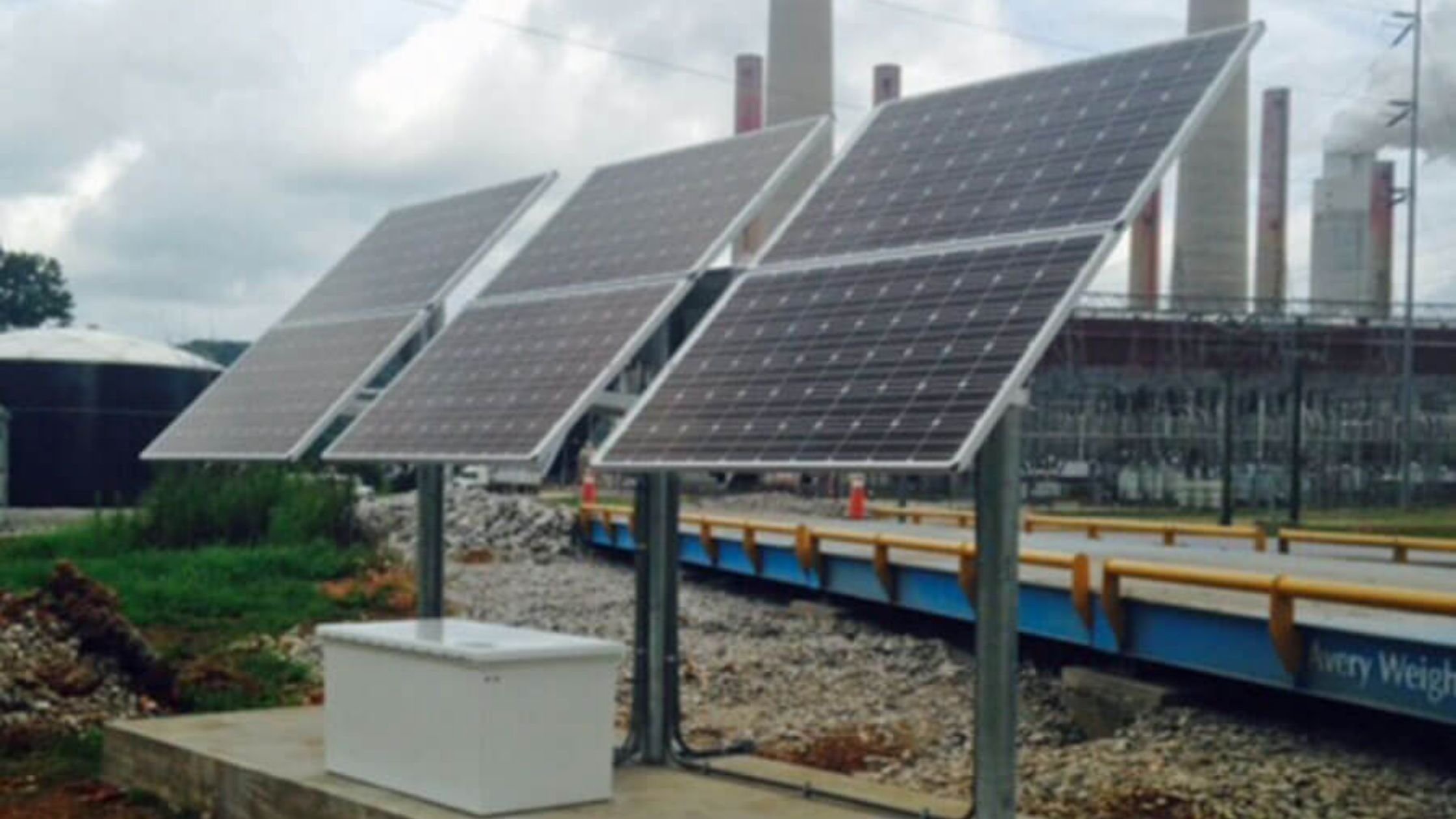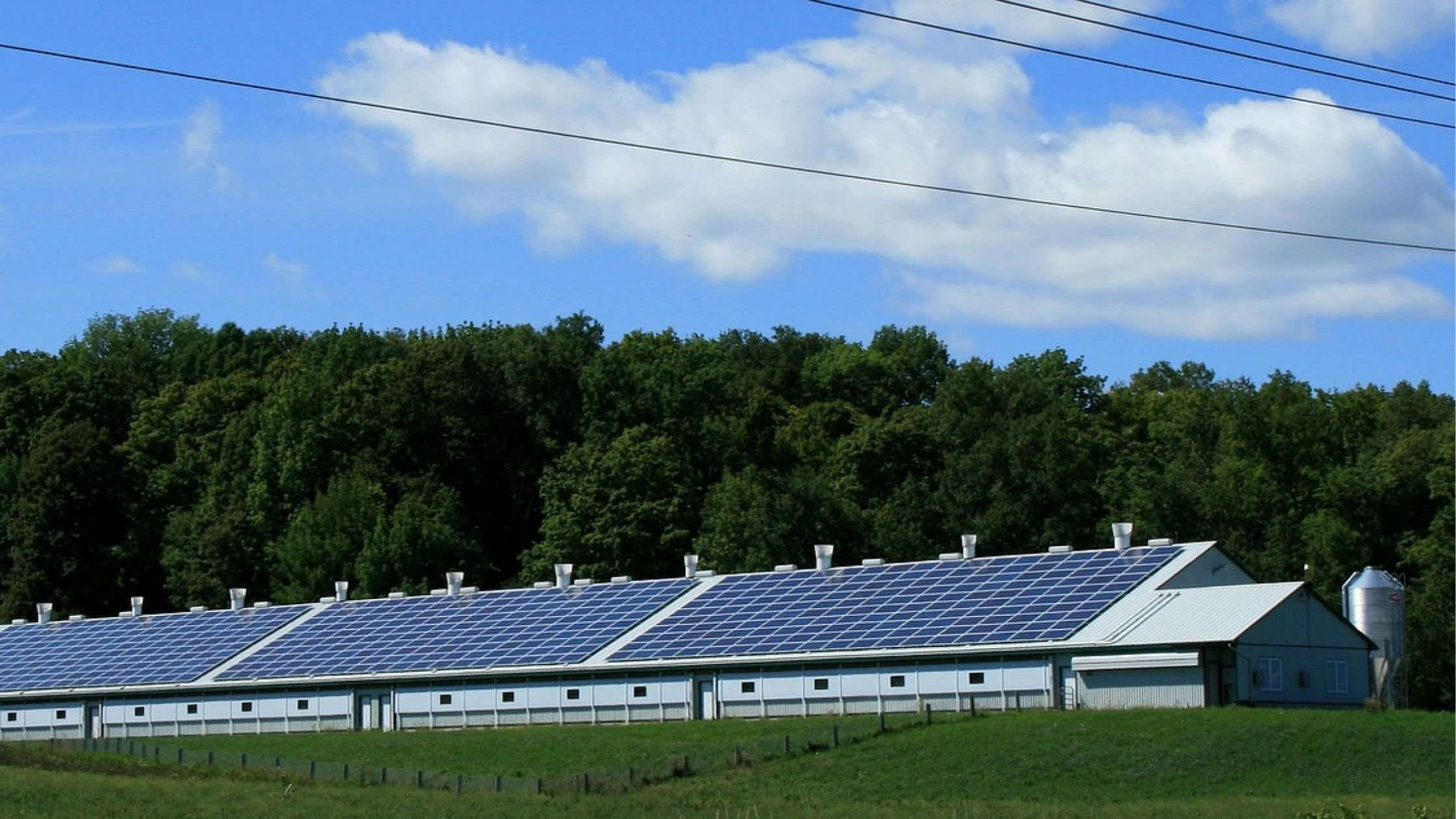


Whether you are working on an off-grid solar system or a grid-tied solar system, understanding sun hours allows you to understand more about how the system sizing is performed. Different setups use different ways of calculating the availability of the sun for a specific location.
And depending on the location of the project, this calculation can vary greatly between one location and the next. Let’s look at how sun hours are calculated, how this varies between different types of units, and how all this information is used when calculating the amount of solar needed for a project.

Solar Reviews says it best; a peak sun hour is one hour of which the intensity of the sunlight reaches an average of 1,000 Watts of energy per square meter. In layman’s terms, a 100-Watt panel will produce approximately 100 Watts of energy in one sun hour, minus system losses.
Since this doesn’t happen at 9 am or 4 pm, the amount of sun that is equated for a specific location looks at the total amount of sun that is produced throughout one day. Therefore, it takes all the power generated from the time the panels start to produce power till it stops and averages it out. This daily average is then compiled together to give us our monthly sun hours used to calculate a solar system.
Unbound Solar states that although panels may get an average of 7+ hours of sunlight a day, the average peak sun is much lower. This is because the solar radiation peaks at solar noon when the sun reaches the highest point in the sky. This number increases the closer you are to the equator and lowers the farther you move away.
So, when looking at the average sun-hours available at a specific location, this data is all compiled together to determine what sun is available. Many on and off-grid systems may say “requires 9 hours of sun” or “requires 6 hours of charge” but understanding that that doesn’t exist, at least not in the winter months, will show you where many companies are leading by falsely representing data. This becomes more apparent in the next sections.

Off-grid solar LED lighting and solar power solutions use worst-case scenario information to ensure plenty of power for year-round operation. This means, in most cases, the average solar insolation for December is used for system design as this has the worst sun availability and the longest night of the year, or June for people below the equator.
This figure tends to be quite small, around 5 hours in areas closer to the equator down to 1 hour in northern climates such as Washington State, Maine, etc. A system sized for southern sunny locations have a much smaller system requirement, or can operate a much higher wattage, than their northern counterparts.
Compare this to what is available in the summer, it may draw a lot of questions since people here in Florida are used to roughly the same length of day and night where northern areas have drastically shorter nights in the summer than the winter.
Off-grid solutions also need to consider a battery backup for their systems. The only thing required by the solar panels is to recharge a battery backup. This battery backup can either be completely depleted every night or with a commercial-grade system properly sized, down about 20% per night. Having good autonomy means that if there is a day that is overcast or rainy, your system has enough time to regain the charge and doesn’t leave you in the dark after a night or two of use.
Therefore, when wanting reliable off-grid solar LED lighting or power system, working with a provider who understands how to size the system accurately will provide the best system for your money. Cutting corners on the battery storage or using incorrect solar data will have problems, especially in the winter months.

Unlike off-grid solar solutions, grid-tied solutions, such as building or home power, use averages when designing a system. This is typically much higher numbers than is presented in the worst-case solutions and averages out the amount of sun available throughout the entire year by taking the averages per month and figuring out the overall average. This is the perfect way to size a system that is used to feed the grid and pull out what it requires for operation.
The information is gathered by comparing the amount of electricity a building or home uses looking over their electric bills. The information provided in kWh is then taken and divided out for average monthly usage. This is then used to size up the appropriate solar station that would provide a NET Zero system.
This means that in the summer months, the amount of power generated by the solar panels will be much greater than what is produced in the winter months. As an average, either by use of credits by the power company or by direct payments, the solar panels generate enough electricity to feed the grid to make the average power bill zero or very low.
Since grid-tied solutions do not have a battery backup, there is no reason to worry about recharging a system; however, with the implementation of Tesla Powerwalls and other battery systems on the market for grid-tied applications, there seems to be a slow merge of the two ways of system sizing.
Obviously, these battery backups are used primarily for areas where people need a backup for their home or office where they cannot have a loss of power; however, knowing when you would most likely use the battery pack will make sure you are still sizing the system properly. As things become more unpredictable, and the cost of batteries continues to fall, we may see more of these types of systems installed as common as a toilet.
Once all this information is understood, you can be more confident that your system is sized appropriately for your application. Knowing the difference between a solar sun hour for an off-grid solar lighting or power system, and the sun hour info used for grid-tied solar solutions is key to knowing your system has been sized correctly and will perform how you need it to.
